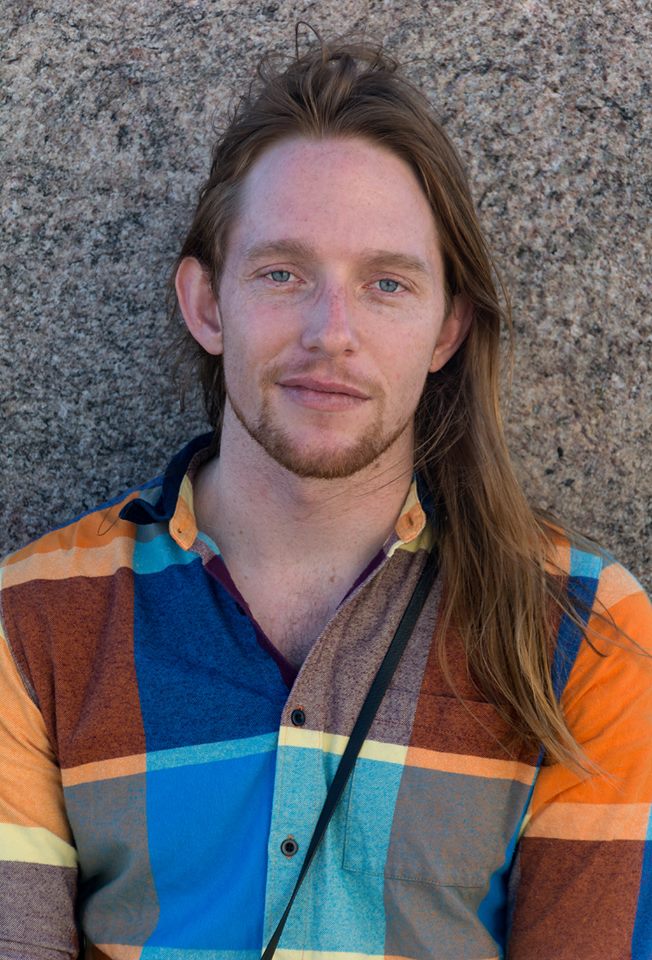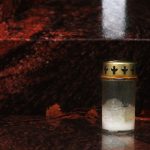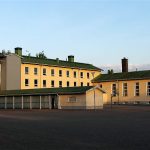The Helsinki City Museum opens on the 13th of May this year at 17:00, in a new location – in Tori quarters, nestled on the corner of Aleksanterinkatu and Katariinankatu (Aleksanterinkatu 16). The renovation of the entire block ushered in a new beginning for the museum, which aims to promote an overall experience depicting the daily life of Helsinki in the past. It’s one of the most engaging and fascinating museums I’ve ever had the pleasure of visiting and is undoubtedly a huge credit to the city. If you took the innovation and interaction of Heureka, the modernity of Kiasma, and the classic aesthetic of Ateneum, the end result would be the intoxicating Helsinki City Museum, resting on the bleeding edge of what museums can be in this day and age.
Speaking with the museum’s director, Tiina Merisalo, it became immediately apparent that the space was designed with the public in mind. “We wanted to create an overall experience … access is always free of charge, so we have designed the entire museum, the interior included, as a low-threshold facility. For example, you can visit exhibitions, shop, unwind, or even work in the open spaces provided. The museum also includes three courtyards, and for example, the Falkman courtyard has only been open in the past to the public for special occasions.”
Traditionally, the space hierarchy in museums in quite rigid: exhibition facilities, a lobby, a shop, and a cafe. People come to the museum to see the exhibitions while the small details melt into obscurity. However, The Helsinki City Museum aims to be a new type of public space and one that would allow different encounters, in which people could also use the space for their own purposes. It’s evident in its appearance and openness, which was also reiterated by Merisalo. “We had to understand the idea that not everyone is interested in history, but they are interested in Helsinki. We wanted to provide a place where everyone could find something that they are interested in. I believe that everyone can find something close to their heart here. It has also led to thinking that, as we have free admission, the collection don’t only have to be in the exhibitions, but they are scattered throughout. For example, these sofas ranging from Art Nouveau to 1990’s style, functionalism, and even a 1950’s armchair – and, for some people, a very nostalgic 80s room over there” Laughing, she continues, “For me, maybe it’s not so nostalgic. You don’t have to be so correct and strict about it. There are many layers.”
The relocation and development of the museum came from the necessity of renovation works in the area. “10 years ago they started to plan to bring more life into this area, and in 2008, they proposed (as the whole house needed to be repaired and refurbished) that the museum could move. We started to think about that, made feasibility studies, and thought that we could make something out of it. Three years ago we realised that we can do more — that it wasn’t just moving, but a transformation. We had to think what the museum could be, and what services we could provide,” said Merisalo. This clean slate has enabled all the creative forces behind the building refurbishment and fit-out to harness fresh energy and create something unique in the process. Yet the completion of the project did not come without challenges.
“We had to work very hard. In the beginning, we didn’t have much money to play with … we fought over money for 2 or 3 years. We made calculations and we decided that if we have to do this, we have to do it well. We convinced the city to invest in this so that it will become an interesting and a hot place to visit. Finally then, they gave us the money. It was a 2-year project to get the money alone!” Merisalo remarked with an air of relief, as all the pieces had obviously come together around us. She continued, “The city saw the value, and they understood that if they made an investment in culture, it gives back … culture produces well-being for the city.”
The museum consists of building from different periods – five old buildings and one new building. The area had mainly been used as offices for the for the Town Hall, and partition walls had been erected in order to turn spacious halls in to cubicles. Creating clear, useful spaces in the complex was a challenge, with partial restorations to the former large halls allowed for more space. The museum’s collections comprise of approximately one million photographs and 450,000 items. In addition, it fosters buildings and environments of cultural-historical value, and operates as the regional museum for Central Uusimaa.
Aside from the luscious interior and extremely well-considered layout, what can you expect from the exhibitions? Well, let me begin with the completely captivating ‘Time Machine’ – a space that aims to envelop you in Helsinki of the past. Chatting briefly with one of the assistants (who was sporting a white lab coat), he explained that the space certainly challenges the stereotypes of how museums present information and aims to appeal to all ages, especially those who are visually inclined. In the dark room, three walls are illuminated with images, animations, and photographs. They warp and change, toying with the idea that time machines usually malfunction in popular depictions. It’s a full sensory experience: birds chirp, you can hear children yelling in the distance, and then suddenly the walls will dissolve into black and white archival footage from the twentieth century, including narration. The real jewel of this section is the virtual reality headset. First, you cover your eyes with the goggles, place headphones over your ears, and press the start button. It takes you on a completely 360-degree panoramic view from the top of the tower of The National Museum (on Mannerheimentie). You can view, from this high point, Helsinki in the early twentieth century, and then, from the same viewing point, the vision transforms into the modern-day city, allowing you to compare and explore, spinning on the spot as you view the entire city. The panoramic concept continues, taking you from the hustle of bustle of tram-riding to workers shovelling snow at Suvilahti, all while the headphones and virtual reality make you feel like you’re really there.
The main exhibition, The Museum of Broken Relationships, consists of items donated anonymously and the related separation stories. The collection of these items for the Helsinki exhibition ran from 2 February to 11 March 2016, which resulted in almost 100 items. This exhibition has also featured in Berlin & London, for example, and has each time increased its collection of items in each of the cities it has visited.
Another large part of the museum is Helsinki Bites, which dives into the past of Helsinki, bringing up common memories about the city’s history. You can, for example, visit a home from the 1950’s or admire the 90-year-old miniature model of Helsinki in 1878. It’s possible to visit a bar from the 1970s and play a song on the jukebox, picking one of the most beloved Helsinki-themed songs chosen by citizens in a vote arranged this year. You can also control the viewing of photographs on a concave screen, with an ability to zoom in on particular areas, and again, spin around the viewing point to see all aspects of the city. Thanks to photographer Signe Brander, who was hired by the Helsinki Board of Antiquities in the early 1900s, a plethora of glass negatives allowed the construction of this unique and interactive way of viewing the city, and many of the portraits throughout the exhibition. These features are but merely scratching the surface of the items included in the exhibition.
The city’s oldest building, the Sederholm House, will again be inhabited by the youngest citizens as Children’s Town opens up as a part of the new museum. In the Children’s Town, Helsinki’s past is illustrated by means of play and activities. It’s possible to visit grandmother’s house from the 1970’s, the Sederholm Store (where all the items are soft, light, and chewable), and an elementary school class from decades ago. There is an ornate dining room where children can bring their own food and relax (even equipped with a microwave), a play area with a soft and forgiving floor, a quiet-space, and a theatre to keep children entertained. No thought or expense has been spared in catering for the younger crowd, and certainly this section of the museum will be a boon to all parents in the city.
I must say that I am particularly fond of museums. However, Helsinki City Museum has completely raised the benchmark on what can be realised in a museum space, both technologically, interactively, and societally. The museum offers a rich, sensory experience free of charge, delivers information in spades, and promises to entertain any visitor, no matter their predilections. It’s a wondrous achievement for the city, and it never ceases to amaze me that Helsinki City supports a project like this, that will undeniably benefit citizens and visitors alike.
The opening programme for Friday, May 13th is as follows
4 p.m – Carnival celebrations on the streets – circus performers, balloons, an open tram, and music.
5 p.m – Opening the doors of the new museum, which is open for the next 24 hours.
7 p.m – Muuan mies performs in the courtyard
10pm – Inginmaa/Röyhkä/Hypnomen perform in the courtyard
12p.m – 7 a.m. Night at the museum film marathon on CRT televisions.
Saturday 14th May
00:00 – 5p.m museum open
12p.m – 7 a.m. Night at the museum film marathon on CRT televisions
8a.m and 8:30a.m – 80s-style morning exercises in the museum lobby
10 a.m – 3 p.m. Traditional playground games in the courtyard.
1, 2, & 3pm – Guided tours (in Finnish)
For more information, visit http://www.helsinginkaupunginmuseo.fi/en/




















